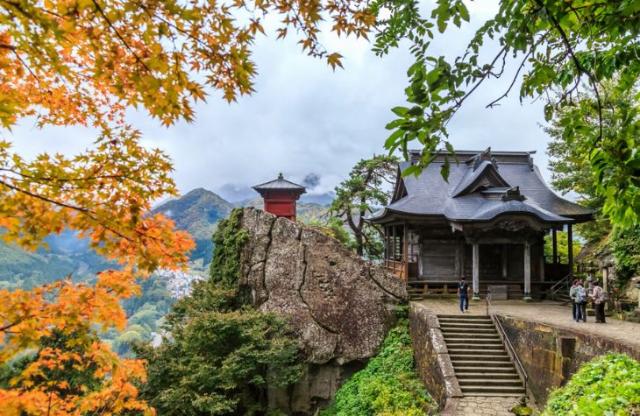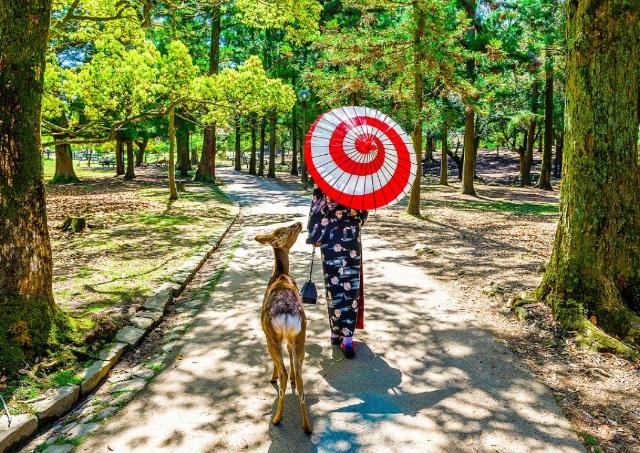Top 11 Things to Do in Fukushima: An Insider’s Guide
Beyond 2011
In March 2011, the coastal strip of the Tohoku region was severely impacted by a massive tsunami caused by an earthquake. While the Fukushima Daiichi nuclear accident was a tragic event, it affected only a small portion of the prefecture. Today, only the designated exclusion zone around the plant remains restricted, while the rest of Fukushima continues to thrive. Radiation levels in inhabited areas are comparable to those in major cities worldwide, ensuring the safety of both residents and visitors.
Fukushima is not just a story of recovery—it is a destination rich in history, culture, and natural splendour. From its proud samurai heritage to its breathtaking landscapes, Fukushima is a place that rewards those who take the time to explore it. Let us reveal the hidden gems of Fukushima below.
Why Visit Fukushima Prefecture?
As the southernmost prefecture of the Tohoku region, Fukushima is nestled between the Tokyo metropolitan area and the northern reaches of Honshu. Its climate, characterized by distinct seasons, makes it an all-year destination—lush and green in spring, fiery red in autumn, and draped in snow during winter.
Fukushima’s cities, including Koriyama and the capital, Fukushima City, are easily accessible via the shinkansen, placing this hidden gem just 90 minutes from Tokyo. The rural charm, combined with the convenience of modern transportation, makes Fukushima an ideal getaway for both history enthusiasts and nature lovers.
1. Aizu-Wakamatsu: The Last Samurai Stronghold
Easily spotted on a map of Fukushima, Lake Inawashiro acts as the gateway to the prefecture’s historic trade city of Aizu-Wakamatsu. A scenic hour and fifteen minutes train ride from Koriyama, Aizu-Wakamatsu is well away from any kind of hustle and bustle without a single skyscraper interrupting the mountainous skyline. Aizu-Wakamatsu is the heart of Fukushima’s samurai heritage. During the Meiji Restoration, when Japan transitioned from a feudal state to a modern democracy, this city became the last stronghold of the samurai. The people of Aizu are deeply proud of this legacy, and it remains an integral part of their identity today.
At the centre of this historical city stands Tsuruga Castle. As the only castle in Japan with red roof tiles, castle enthusiasts flock to Tsuruga Castle to visit one of the larger and more elegant reconstructions well-kept in a small city far from the heavy traffic of the shinkansen line. The castle’s annual candle festival dots its grounds with carved lanterns and corresponds with another local festival that attracts tourists from all over the world. It’s safe to say that winter is where the area really comes to life.
In Aizuwakamatsu, you can also find the Oyakuen Garden, a medicinal herb garden in Japanese style. Moreover, the 18th century Sazaedo Temple, a unique 16-metre wooden tower with a double spiral staircase, stands proudly atop Aizuwakamatsu’s hillside.
Aizu-Wakamatsu also hosts the annual Byakkotai Festival, commemorating a group of young samurai who fought bravely during the Boshin War. It is a powerful reminder of the resilience and honour that defines Fukushima’s past.
2. The Edo Village Snow Festival in Ouchi-juku
South of castle town Aizu-Wakamatsu lies a hidden snowy wonderland of centuries passed. Ouchi-juku is a former Edo-era post village that still sits seemingly untouched by time in rural Fukushima. Lined along the One River, the thatched rooves of the hut cafes, restaurants, and souvenir shops provide the allure of walking through a living museum maintained through generations that offers visitors a chance to take in the sights, sounds, and tastes of the local culture.
Annually, on the second weekend of February, the Ouchi-juku Snow Festival is packed out with thick snow and crowds itching to get a glimpse at the local snow sculptures and catch the fireworks at night. It’s a similar vibe to the famous Sapporo Snow Festival in Hokkaido, but this one is set in a historic village. Like Sapporo, this time of year guarantees fresh powder snowfall.
Buying a day pass from the Aizu-Wakamatsu Station tourism office will you get in, out, and around Ouchi-juku without issue. If you have time, staying at one of the many hot spring resorts dotted along the Aga River is well worth it. If you stop at Ashinomaki Onsen Station, you may just be able to catch one of the several cat stationmasters on the job (or napping on the clock, more likely). Snapping a couple shots with these cute feline managers in uniform is well worth it for fans of furry friends.
3. Fukushima Prefecture: The Land of Soba and Sake
While it is not the literal meaning of Fukushima, the land of soba and sake would be a fine modern substitute considering just how much these delicacies represent the prefecture.
One of the more unique eats of the region is the Negi soba (green onion soba) of Ouchi-juku. Only the huts of Ouchi-juku serve this dish where chopsticks are substituted with a long green onion. There’s certainly a learning curve to eating noodles with an onion, but it makes for an interesting experience.
For those hoping to get a little taste of everything, Kiriya Gongenteii in Aizu-Wakamatsu, just north of the castle, is a one-stop lunch shop with a popular set of three different kinds of soba with pickled vegetables. The shop also has a flavorful sudachi (Japanese lime) soba that has remained a top choice. Visitors really get a genuine taste of Fukushima here.
Fukushima also boasts a number of award-winning sake (rice wine) options. For those visiting Ouchi-juku, it’s difficult to miss the Misawaya Kyuemon shop. With sake barrels outside, visitors are beckoned in for tastings and shopping of local Aizu spirits. Whether you prefer sweet or dry, there’s something delicious and unique for everyone.
Likewise, a few stations north of Aizu-Wakamatsu, the Yamatogawa Sake Brewery near Kitakata Station is open every season with plenty of options in their centuries-old facility. Visitors can tour the brewery with some sampling at the end. It’s both an educational and historical experience to get to peruse the building.
4. Try Unique Cultural Experiences
Like all regions in Japan, Fukushima has its unique culture, traditions, and crafts, too. By immersing yourself in the local culture, you’ll be able to say not only that you visited Fukushima, but you connected to its essence.
Whether you pick up a cute and legendary Akabeko (bowing papier-mâché cow amulets symbolizing good luck and strength) from a souvenir shop, attend a workshop to try the lacquerware technique called Chinkin ("Sunken-gold"), or paint your own Erosoku (hand-painted candles from the samurai period), there are experiences for everyone to get creative and connect to the local culture.
The Natural Wonders of Fukushima
With rugged mountains, volcanic lakes, and pristine forests, Fukushima’s landscapes are among Japan’s best-kept secrets. The prefecture’s diverse geography makes it an ideal destination for nature lovers and outdoor adventurers alike.
5. Goshiki-numa: The Five-Coloured Ponds
Located in the Bandai-Asahi National Park, Goshiki-numa is a collection of vibrant volcanic lakes formed after the 1888 eruption of Mount Bandai. Depending on the season and weather, the lakes shift between shades of emerald-green, turquoise, and deep cobalt blue.
A leisurely walk along the well-marked trail offers breathtaking views at every turn, with the reflection of Mount Bandai adding to the magical atmosphere.
6. Mount Bandai: Little Fuji of the North
Often referred to as “Aizu-Fuji” due to its shape resembling Mt Fuji, Mount Bandai is a paradise for hikers in the summer and a top ski destination in the winter. The mountain’s diverse trails lead adventurers through ancient forests, past bubbling hot springs, and up to scenic viewpoints overlooking Lake Inawashiro, one of Japan’s largest lakes.
7. Takayu Onsen: A Hidden Hot Spring Retreat
For those seeking a relaxing escape, Takayu Onsen is a must-visit. Tucked away in the mountains near Fukushima City, this small onsen town is known for its milky white sulfuric waters, which are said to have healing properties. Unlike larger hot spring resorts, Takayu Onsen offers a more intimate, secluded experience—perfect for unwinding after a day of exploration.
8. To-no-Hetsuri: Spectacular Rock Formations
Near Ouchi-juku, in a town called Shimogo, a scenic riverside can be found with unique natural rock formations: To-no-Hetsuri. The meaning of its name can be translated to ‘the carved pagoda overlooking the river’, or ‘the pagoda’s slope facing the river’. The shapes of the cliffs look like as if they were carved out by humans to resemble a pagoda – a truly amazing artwork of nature, created over the past 28 million years!
9. Tadami Railway Line: Scenic Hikes in All Seasons
The Tadami Line is a railway line that runs through the Aizu region, featuring incredibly scenic views in nature. Connecting the samurai town Aizu-Wakamatsu with the charming countryside of Oku-Aizu, this train line passes through serene forests, rivers and bridges, making for an exciting way to explore the hidden gems of Fukushima.
What is more: in winter, there is a bus shuttle service running through the most scenic spots along the Tadami Line, including a lunch and a train ride back to Aizu, making a perfect half-day trip.
Rebuilding and Resilience: A New Fukushima
The events of 2011 left an indelible mark on Fukushima, but the region’s spirit of resilience is stronger than ever. In the years since the disaster, Fukushima has reinvented itself as a leader in eco-tourism, sustainable travel, and community-driven initiatives.
10. A Green Future: Sustainable Tourism in Fukushima
From revitalized hiking trails to eco-friendly ryokan stays, Fukushima is leading the way in sustainable tourism. The region has invested heavily in clean energy, with vast solar and wind farms symbolizing its commitment to a greener future.
Visitors can even tour farms and wineries that have adopted innovative organic and regenerative farming techniques. Our recommendation is Dana Village, an organic farm stay, where you can retreat in the countryside life of Nishi-Aizu, Fukushima, while recharging your body and soul with organic foods and holistic well-being techniques.
11. Engaging with Local Communities
One of the most rewarding aspects of visiting Fukushima is meeting the locals who have worked tirelessly to rebuild their communities. Many villages offer hands-on experiences, such as learning traditional crafts like Aizu lacquerware painting or joining local farmers for seasonal fruit picking. These interactions not only support local businesses but also provide a deeper, more meaningful connection to the region.
Is it Safe to Travel to Fukushima?
Absolutely. Any concerns of safety can be swept away, and the hospitality of the locals couldn’t make that clearer. There’s so much to see and do in Fukushima, and it would be a shame to see it kept a secret. You won’t regret it!
Ready to Make Snow Angels?
Get a glimpse of the rest of Tohoku on our Tokyo and Tohoku tour!
Want even more mountains? Check out our Japanese Alps tour!
Plan your trip with us
Get in touch with one of our travel consultants, they are ready to help you create the trip you always dreamed of.
Online Consultation



